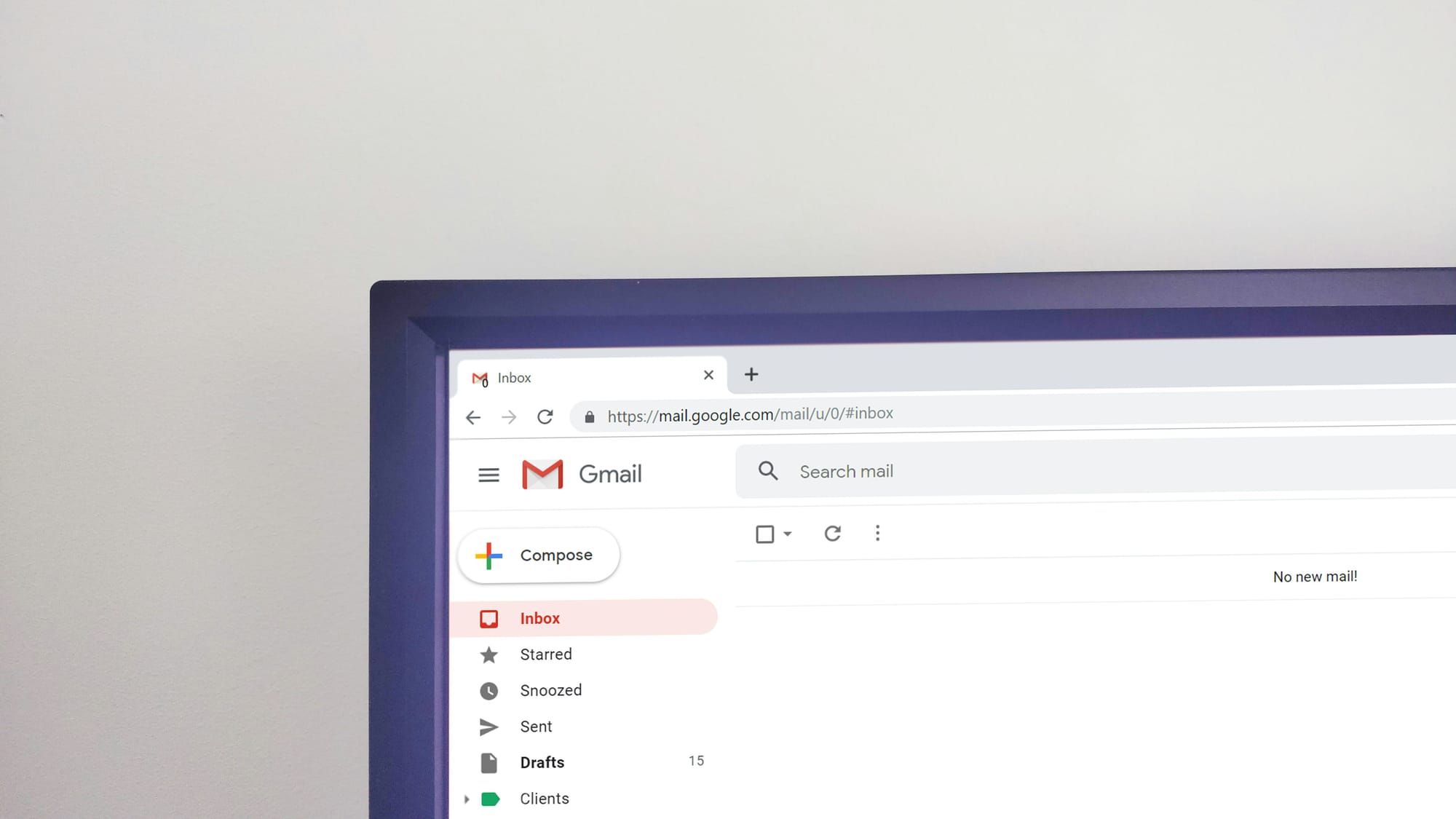It's not clear what will happen to email marketing in this fast-changing digital world. Since there are always going to be new ways for people to communicate, their habits are always changing. It's easy to assume that this long-standing marketing strategy will disappear.
However, as experts weigh in on the subject, it becomes clear that the future of email marketing is far from certain. Let's get into the specifics of the topic by looking at where email marketing came from, and what part it plays now in business. Then, we'll talk about what problems might come up in the future. Let's break down the question: Will email marketing die, or will it continue to grow and change with the times in digital marketing?
What Is Email Marketing?
Email marketing is an important part of digital marketing. It uses email to get people to buy things or interact with businesses. Businesses can directly reach their target audience, build ties with them, and get more sales with this powerful tool. This part discusses email marketing basics so you know how it works and its benefits.
Important Parts of Email Marketing
To really understand what email marketing is all about, we need to get to know its main parts:
- Email List: With an email list, you can send updates, newsletters, or advertising content to people who have signed up to receive them.
- Email Service Provider (ESP): An ESP is a platform or piece of software that makes it easier to send, control, and create email campaigns. It has things like email templates, statistics, contact management, and automation.
- Email Campaign: If you want to reach a certain group of people with a specific email, you can send them an email campaign. It could be newsletters, announcements about new products, special deals, or personalized messages.
Benefits of Email Marketing
Email marketing has many benefits that have made it so popular with businesses over the years:
- Affordable: Email marketing is much cheaper than standard marketing methods like direct mail or print ads. It gets rid of the costs of printing, mailing, and distributing.
- Targeted Audience: Businesses can use email marketing to send messages that are more relevant to certain groups of people. Segmentation lets marketers send customers personalized content based on demographics, prior purchases, and activity.
- More Income: Email marketing has always shown a good return on investment (ROI). It's a good way for businesses of all sizes to market because they can reach a specific group. It's also cheaper, and they can see results directly.
- Interacting with Your Audience: Email marketing lets businesses connect with their customers more humanly. By giving people useful content, you can build trust, keep them coming back, and make lasting relationships.
- Clear Results: Email marketing is different from other types of marketing. Because it lets you track and collect a lot of data. Marketers can use measures such as open rates, click-through rates, conversion rates, and more. To see how well their work is doing and decide what to do next.
The Best Ways to Use Email Marketing
To get the most out of your email marketing efforts, it's important to follow these best practices:
- Permission-Based Marketing: It means that you get people's clear permission before adding them to your email list. This helps you stay in line with anti-spam laws and keep a good list of subscribers.
- personalization methods: Write subject lines that get people to open your emails. Why do you think people open your emails? A good subject line can make or break the effort as a whole.
- Personalization: Use personalization methods to make emails feel more relevant and tailored to the people who receive them. To make the experience more personal, use their name, the things they've bought in the past, or other related information.
- Mobile-friendly: As smartphone user rises, emails must also be mobile-friendly. For a smooth user experience, you need responsive design and content that works well on mobile devices.
- Testing and improving: Test parts of your email campaigns, like the subject lines, the layout of the text, and the call-to-action buttons. Look at the results and make changes based on what you learn from the data to make the ad work better over time.
By mastering email marketing and using best practices, businesses can boost engagement, sales, and success. In the next part, we'll talk about how email marketing has changed over time and how social media has affected that change.

The Development of Email Marketing
Email marketing has changed a lot since it began. This part will talk about the history of email marketing, from its early days to the present day. To understand where email marketing is now and where it might go in the future. You need to know how it has changed over time.
When Email Marketing First Came Out
In the late 1970s and early 1980s, when the idea of email first started to catch on. Email marketing also began. At the time, email was more for personal talks than for advertising. But businesses quickly saw that email could help them reach more people and get their ideas across more quickly.
When email newsletters were first released, businesses used them to send news, information, and deals right to their customers' inboxes. Most of the time, these newsletters were just plain text messages. They didn't have any of the fancy layouts and images that we see in email campaigns today.
How Social Media has Changed Email Marketing
When social media sites came out in the 2000s, they caused big changes in the world of digital marketing. As sites such as Facebook, Twitter, and Instagram became more famous. Marketers started to wonder if email marketing was still useful and effective. Some people even said it would die because they thought social media would fully replace email as a marketing tool.
In fact, things turned out to be very different. Social media and email marketing didn't replace each other. Instead, they found a way to work together to make each other better. Businesses realized that social media and email marketing could work together, each serving a unique role.
Businesses can reach more people, communicate with them in real-time, and promote products on social media. At the same time, email marketing kept doing well as a more direct and targeted way to talk to people. Marketers started putting social media buttons and links in emails. To get people to share their content on social networks as well as get more people to see it.
What's New in Email Marketing
Email marketing has changed over the past few years to keep up with new technologies and changing customer habits. Some trends that stand out are the following:
- Automation and Personalization: Automation has changed email marketing. By letting companies send timely and customized messages based on certain events or actions from customers. Automated workflows, like welcome emails, cart abandonment reminders, or birthday offers, are now popular ways to keep customers interested.
- Responsive Design: Because more and more people are using phones, email marketers need to use flexible design. Make sure your emails look well on all kinds of screens by optimizing them. So, that users can have a smooth experience on any device.
- Interactive Content: Email marketers are adding dynamic elements such as GIFs, videos, quizzes, and polls to their emails. To make them more interesting and fun to read. People are interested in these interactive features, which make them want to act.
- Personalization and Segmentation: Marketers use data and advanced segmentation methods to send content that is highly focused to each person. Businesses can make more effective email ads that connect with their customers on a deeper level by learning about their likes, dislikes, and habits.
- Data-driven Insights: Marketers can learn a lot about how well their email efforts are doing by using powerful analytics and tracking tools. Businesses can improve their strategies and make choices based on data by looking at metrics like open rates, click-through rates, and conversion rates.
We can see that email marketing has not only survived the rise of social media, but it has also changed with the times and done very well. We will talk about the role of email marketing in modern business, including its pros and cons and how it stacks up against other digital marketing methods in the next part.

How Email Marketing Fits Into the Business World Today
Email marketing is still an important part of doing business today. This part will talk about the different things that show how important and useful email marketing is in this digital age.
Email Marketing VS Other Online Advertising Types
There are many digital marketing tools out there, but email marketing has some clear benefits that make it stand out:
- Reach and Control: Businesses own and have full control over their email list, unlike social media sites or search engines. This makes sure that words get to the right people without having to rely on algorithms or outside factors.
- Making Changes: Email marketing lets you make changes and personalize things in a lot of ways. Businesses can make their messages more relevant and effective by using data and segmentation methods to make their messages fit the needs of specific groups of people.
- Targeted and Permission-Based Marketing: Businesses can interact with people who have chosen to receive their messages through email marketing. If you want more people to engage with your content and convert to buyers, ask for their permission first.
- More Time and Access: People's emails stay in their inboxes until they read them or delete them. Not like paid ads or posts on social media, which might only be there for a short time. There is a longer window of time to interact with the audience, which improves the likelihood that they will act.
- smartly aligning these platforms It's possible for email marketing to work well with other marketing platforms, such as social media or content marketing. By smartly aligning these platforms, businesses can reach more people, get more visitors, and improve the general effectiveness of their marketing.
Case Studies Of Successful Email Marketing Campaigns
A huge number of businesses have had a lot of success with email marketing. Case studies show how effective email marketing is in different fields and give information about the strategies and tactics that these businesses used to be successful.
Companies can use email marketing to connect with their customers and grow by learning about its benefits and how it differs from other digital marketing platforms. For this, they can look at cases of how people have used their emails productively in the past.
In the next part, we'll talk about the problems that could make email marketing less effective over time and the things that might affect its future.

Issues With Email Marketing
Businesses have found email marketing to be useful, but it does have some problems that could make it less useful in the long run. In this part, we'll talk about some of the biggest problems that email marketing faces in today's constantly changing digital world.
Changes In Customer Demand
Consumer tastes and habits change over time. For email marketing to work, it's important to stay on top of these changes. Some problems that come up in this area are:
- Overwhelm and Information Overload: People may feel overwhelmed by the growing number of emails they receive every day and be pickier about which emails they respond to. It's getting harder and harder to stand out from the crowd and get people's attention.
- Choice of Other Ways to Communicate: Younger groups, like millennials and Gen Z, may like other ways to communicate, like instant messaging or social media, more than email. To reach and interact with these groups of people successfully, businesses need to change and look into new channels.
New Marketing Platforms
Email marketing is facing new problems because of the rise of new marketing platforms and technologies. Businesses may be interested in these platforms because they have unique features and functions that free up time and money from email marketing. Some problems that come up in this area are:
- Rise of Messaging Apps: Message apps like WhatsApp, Facebook Messenger, and WeChat let businesses talk to their customers directly and in real time. Because of how popular these platforms are, companies may decide to put less effort and time into email marketing.
- Advertising on Social Media: When businesses advertise on social media sites, they can really reach specific groups of people. Businesses may decide to focus more on social media ads instead of email marketing because they work so well and reach so many people.
Spam and Privacy Issues
There are problems with email marketing because of the large amount of spam and growing worries about privacy. Some of these problems are:
- Delivery and Inbox: Email providers are always changing the rules they use to weed out spam and other unwanted emails. This might change how well marketing emails get to customers and where they show up in their inbox. Making sure that emails get to the inboxes of the right people is always a problem for marketers.
- Data Privacy Regulations: The General Data Protection Regulation (GDPR) in Europe and the California Consumer Privacy Act (CCPA) in the US are stricter rules that protect customer data. This makes it more important for businesses to get permission and keep customer data safe. To carefully manage email marketing, you need to follow these rules.
How to Deal with This Problem
Even though these problems exist, email marketing can change and get around them in a number of ways, including:
- Targeted and Relevant Content: To get people's attention and stand out from the crowd, businesses should send material that is highly relevant and targeted. Some ways to make sure that emails get to the right people are to use personalization tools and divide email lists into groups.
- Permission-Based Marketing: This is for users to trust you and not worry about spam and privacy. You should use strong permission-based marketing techniques and make sure they give you clear permission. People are more likely to trust email marketers who are clear about how they handle data and give people easy ways to stop getting emails from them.
- Integration with New Platforms: Businesses don't have to see new marketing platforms as competitors. Instead, they can look for ways to use email marketing along with these new platforms. Putting buttons for sharing on social media in emails is one way to get people to share content on those sites, which is good for both.
- Always Changing and Innovating: Email marketing should always evolve to match new technologies and customer tastes. By trying out new tactics and features and keeping up with industry changes, email marketing can stay up-to-date and deal with problems.

What Will Happen to Email Marketing
When we think about the future, there are many guesses and predictions about how email marketing will change. We'll talk about some possible results here. Taking into account both the new ideas that could change email marketing in the future and the challenges that it might face.
Changes and New Ideas in Email Marketing
- Advanced Personalization: Hyper-personalization is what you should do email marketing for in the future. As AI and data analytics get better, businesses will be able to make sure that every email receiver has a very unique experience. Algorithms that AI drives can look at how a user acts, what they like, and the situation to make personalized content in real-time.
- Dynamic and interactive emails: You can add interaction elements such as GIFs, videos, and quizzes may be added to emails more often. These moving parts will make people more interested and give them a more complete experience, which will lead to more clicks and sales.
- Automation and AI Integration: Adding automation and AI to email marketing will make the process even easier. With the help of automation driven by AI, businesses will be able to send emails that are timely and relevant based on how customers act, what they like, and predictive analytics.
Potential Problems for Email Marketing
- Rise of Message Apps: As message apps become more popular, businesses can change how they work and what tools they use. Marketers will have to figure out how to incorporate chat apps and the unique benefits of email marketing into their overall marketing plans.
- Stricter Rules on Data Privacy: New rules on data privacy may affect how you write email marketing. These rules will help businesses keep their customers' trust. Businesses should ensure that their email marketing lists are open and ask for permission first.
- Increasing Competition: When people get too many emails, they may lose interest in what they're doing. Companies must keep coming up with new ideas to stay ahead of the competition and send interesting and useful material that people will want to read.
What Experts Think About the Future of Email Marketing
Experts in the field have talked about what they think will happen with email marketing in the future. Even though people have different thoughts, a few themes keep coming up:
- Email Marketing will Evolve: Over time, people expect email marketing to change. Email marketing will continue to change and adapt to the new digital world. Even though it will use new tools and technologies, it will keep its own advantages, such as direct touch with customers and full control over their data.
- Personalization will be Key: Personalization will become more and more important to the success of email marketing. Customizing content for each recipient based on their actions and likes and dislikes will become standard. This will increase engagement and sales.
- Connecting to Multiple Marketing Channels: Email marketing will keep connecting with other types of marketing, such as social media, content marketing, and mobile marketing. Businesses will need to make plans that work with all of their channels and make the most of their skills so that customers have a smooth and unique experience.
In the future, email marketing will remain useful and flexible, but we need to solve some problems. Even though the internet is always changing, businesses can still connect with their customers and grow through email marketing as long as they are open to new ideas, can adapt to them, and can use new tools with it.

